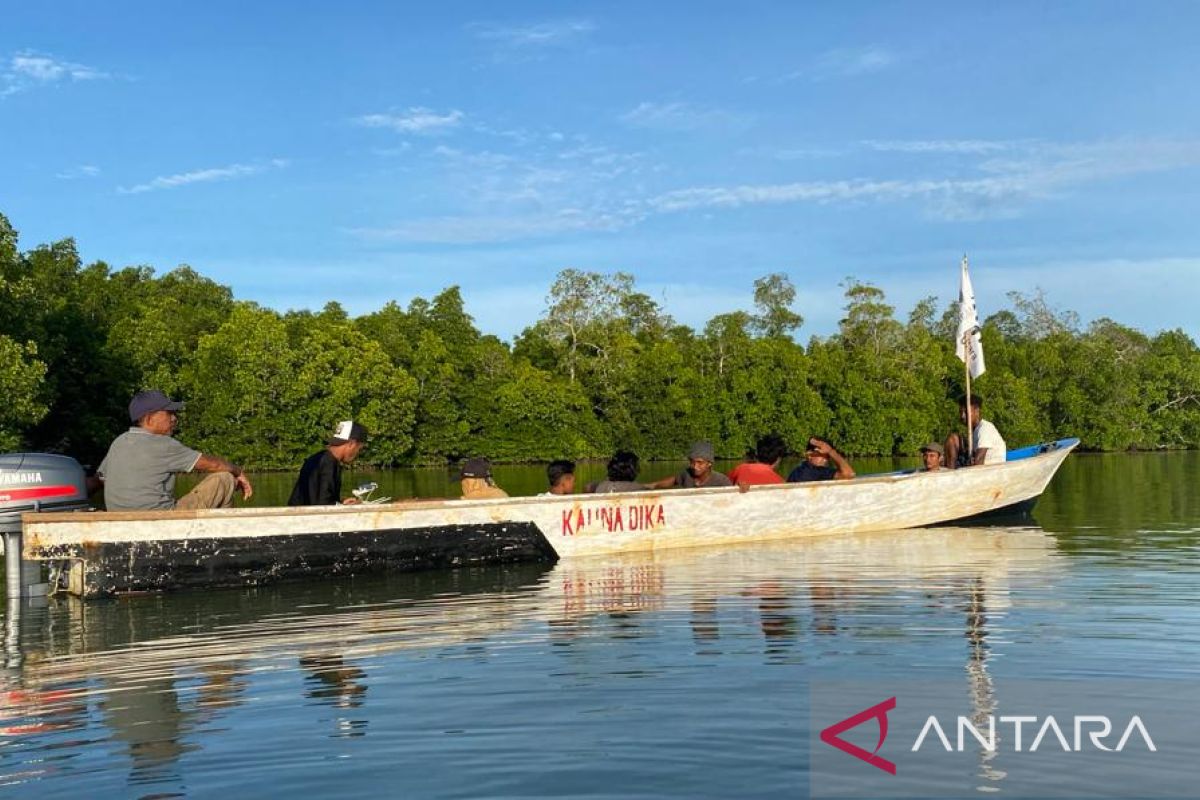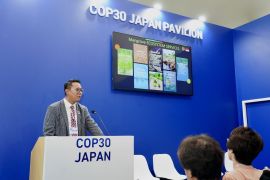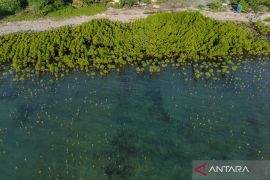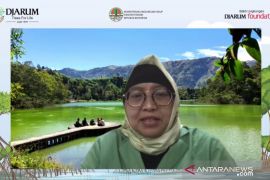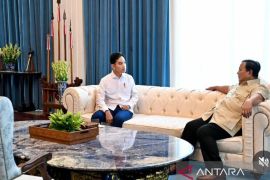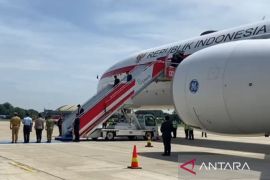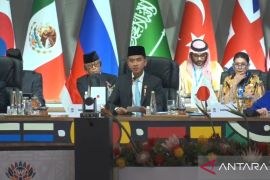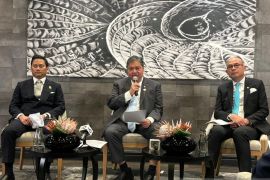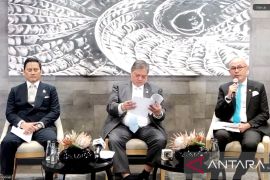The acceleration of mangrove rehabilitation will include areas that were earlier a mangrove habitat though have been converted into non-forest areasJakarta (ANTARA) - The mangrove ecosystem in Indonesia is garnering increasing attention ahead of the G20 Summit scheduled in Bali on October 2022, with mangroves to be showcased to global leaders.
Minister of Environment and Forestry Siti Nurbaya remarked that mangroves would proffer a positive image of the country and support Indonesia's Presidency in the 2022 G20. She notified that the leaders of G20 member countries will visit the Mangrove Conservation Forest Area in Denpasar.
The success of the management of mangrove areas in Bali is expected to showcase Indonesia's commitment to dealing with climate change. These efforts have been demonstrated through the restoration and rehabilitation of mangroves, peat, and other critical land ecosystems in the country.
In addition, Nurbaya underlined the importance of mangroves in achieving the national greenhouse gas (GHG) emission reduction target, given the ecosystem's ability to absorb carbon.
"Although Indonesia only has a mangrove forest area constituting approximately two percent of our total forests, it will be able to store carbon by 10 percent of all existing emissions," she remarked.
Data from the National Mangrove Map (PMN) in 2021 showed that the distribution of mangroves in Indonesia reached 3,364,080 hectares comprising 2,661,281 hectares within the area and 702,799 hectares outside the area.
Related news: Preserving Indonesia's mangroves to nurture blue carbon potential
This figure also shows a significant increase in the number of areas as compared to 3,311,207 hectares recorded during the 2013-2019 period.
The area in 2021 comprised various types of variants ranging from well-maintained areas to damaged areas.
In a bid to address this matter, the government, through the National Peatland and Mangrove Restoration Agency (BRGM), is conducting mangrove rehabilitation in an area spanning 600 thousand hectares until 2024.
In 2021, the BRMG had rehabilitated a mangrove area spanning 34,911 hectares, well above its target of 33 thousand hectares. The rehabilitation target covers an area of 29,500 hectares in nine priority provinces and 3,500 hectares in 23 other provinces.
The BRGM had originally planned to rehabilitate an area of 83 thousand hectares in 2021, though the target was revised due to the COVID-19 pandemic.
Related news: Indonesia to accelerate mangrove rehabilitation: minister
Head of BRGM Hartono remarked that the target to rehabilitate 600 thousand hectares of mangrove forests, as the largest mangrove rehabilitation projects in the world, could be conducted in collaboration with various parties.
Some 54 thousand hectares were in damaged condition, while 180 thousand hectares were in moderate condition. Moreover, 780 thousand hectares of mangrove habitat had been converted for various uses.
"The acceleration of mangrove rehabilitation will include areas that were earlier a mangrove habitat though have been converted into non-forest areas," Hartono stated.
In accelerating the rehabilitation of mangroves, a landscape approach was applied by BRGM by identifying 130 landscape units across Indonesia, with the largest being in Sumatra.
With the landscape approach, understanding and agreement are required among stakeholders in the designated land, since rehabilitation at one location will affect other locations in the same area.
The mangrove landscape is also a mosaic landscape for various uses, such as silvofishery, ecotourism, and sustainable use.
Hence, mangrove rehabilitation is not only related to planting but also ensures sustainable benefits for rehabilitated mangroves in the long term.
Hence, the BRGM continues to strengthen villages around the mangrove ecosystem that is expected to encourage the surrounding community to conduct management in the form of social forestry and others.
"This work can achieve not only physical realization in the form of mangrove plants but also strengthen the rural communities in the form of involvement in social forestry," he stated.
In accelerating rehabilitation, Hartono highlights that in addition to using the State-Budget (APBN), there is also the potential to receive assistance from the River Basin Area (DAS) responsibility fund by the holder of Forest Area Utilization Permit (IPPKH).
There is also investment modeling for mangrove areas that play a role in carbon storage and sequestration, as a part of carbon trading that is currently being pushed by the government.
Related news: BRGM exceeds 2021 mangrove rehabilitation target
Focusing on aquaculture
Director of the Marine Program of the Nature Conservation Foundation (YKAN) Muhammad Ilman stated that in order to rehabilitate mangroves, it is necessary to consider that aquaculture is one of the factors causing damage to the ecosystem.
Hence, one of the efforts to rehabilitate mangroves should be made in aquaculture areas. However, there are two issues in doing so, specifically residents, who will lose their livelihoods if part of the pond area is rehabilitated, and the likelihood of people thinking they have lost their land.
"To rehabilitate 600 thousand hectares, we do not have many choices. First, we have to work with farmers to restore aquaculture. Thereafter, we have to ensure farmers that they still have access to aquaculture, and we need to offer them certainty regarding the land status," Ilham remarked.
Ilham also deemed it necessary to ensure the livelihoods of the community around the ecosystem.
Ilham highlighted several ways to overcome these issues, including by ensuring stable output of shrimp production despite the aquaculture area getting smaller.
He believes that production can be boosted by the technology of today's fisheries. Hence, it was necessary to bolster collaboration between the government and farmers to encourage production in the designated area for rehabilitation.
Related news: BRGM plans Mangrove Week to honor rehabilitation community's efforts
The second solution is to find other sources of income from the mangrove ecosystem, such as sugar production from one of the mangroves species called Nipa Palm. Non-timber products in the mangrove area, such as honey, cosmetics, and medicines, also hold potential.
Ilham stated that it would take time to realize the program, to which end, related stakeholders were suggested to henceforth prepare the mechanism.
Ilman has encouraged budget investments or restoration projects that focus not only on planting but also on increasing cultivation on smaller lands and on securing land tenure.
He believes that if these aspects can be achieved, then the community will conduct mangrove rehabilitation independently.
Related news: BRGM outlines four strategies for expediting mangrove rehabilitation
Related news: Press plays important role in mangrove rehabilitation: Minister
Editor: Fardah Assegaf
Copyright © ANTARA 2022
